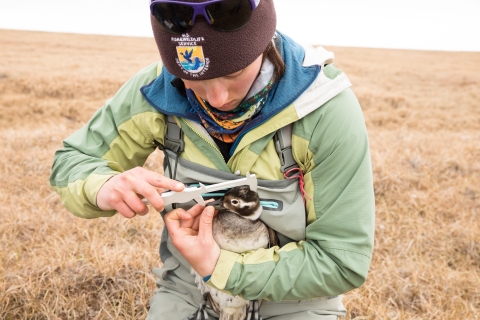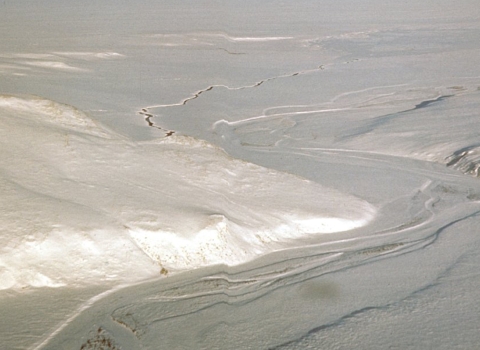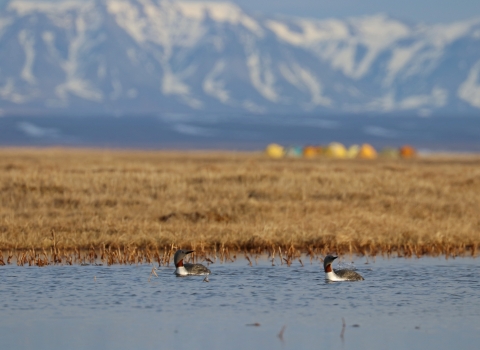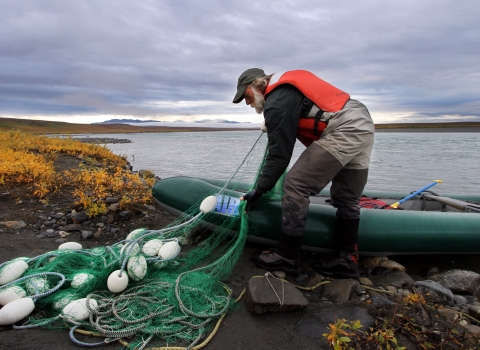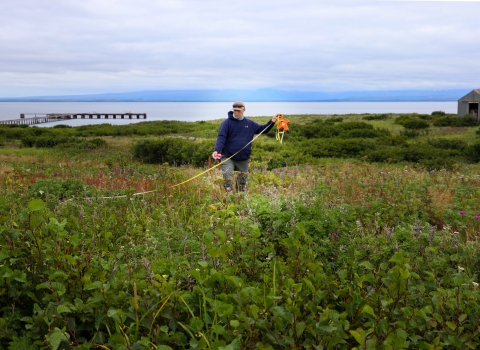Projects and Research
Arctic refuge staff collaborate with partners, organizations, communities and other U.S. Fish and Wildlife Service programs to monitor and research the ecological systems and diversity of wildlife in this far northern landscape. Current and recent projects include:
- Inventory and Monitoring Plan activities
- Monitoring and researching migratory birds that breed and nest on the arctic coastal plain
- Aerial moose population surveys
- Moose research on the north slope and coastal plain
- Caribou spatial ecology and migration research
- Dall sheep surveys
- Arctic fox investigations
- Snow surveys
- Fisheries research
- Wetlands inventory
- Hydrological monitoring
The Arctic National Wildlife Refuge and the U.S. Geological Survey maintain a network of monitoring stations across the coastal plain of the Arctic National Wildlife Refuge. These stations report real-time data on snow and soil conditions that may be used to help support future planning of tundra travel on the coastal plain.
The Arctic National Wildlife Refuge engages the public through a variety of NEPA processes to best guide management decisions affecting Arctic Refuge conservation.
Files associated with the following processes are included below:
------------------------------
The US Fish and Wildlife Service is evaluating a Right of Way request application for access to...
Water is critically important to all the habitats and species found on Alaska’s Refuges, including Arctic. Our Water Resources Branch provides scientific leadership and technical assistance and collects data to quantify ecological water requirements, address physical and ecologic habitat issues, and provide long-term monitoring to assess changes in the hydrologic and aquatic landscape. The...
When woolly mammoths still roamed Earth, rain and snow fell on the south side of Alaska’s Brooks Range. Those same ancient waters are just now entering frozen rivers on Alaska’s North Slope via perennial springs. And they hold the key to survival for salmon-sized Dolly Varden and several other species of fish in Arctic National Wildlife Refuge.
Read more about Alaska's North Slope...
As part of the National Wetlands Inventory, we are mapping and digitizing high priority wetlands in Alaska’s 16 National Wildlife Refuges.
The U.S. Fish and Wildlife Service is the principal federal agency tasked with providing public information on the status and trends of our Nation's wetlands. Our National Wetlands Inventory provides detailed information...
Invasive Species Program staff collaborate with Alaska's National Wildlife Refuge, the State of Alaska and other partners to protect Alaska's lands and waters by working to detect invasive species infestations while they’re still relatively small and have the highest chance of being successfully eradicated. We survey terrestrial, freshwater, and marine environments for invasive plants and...




